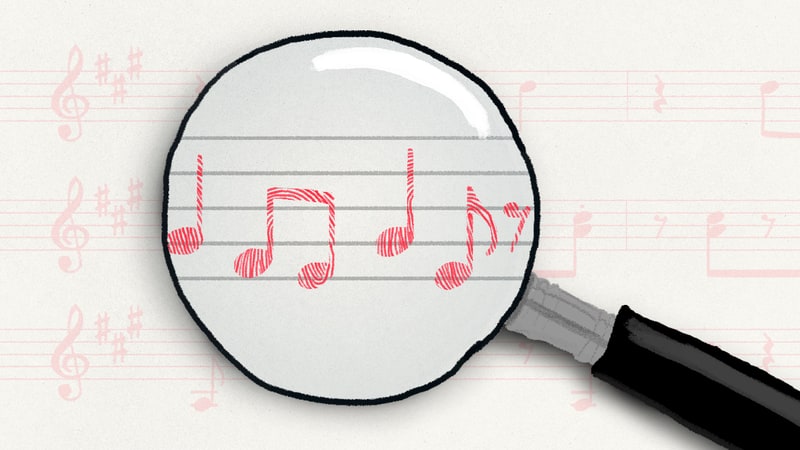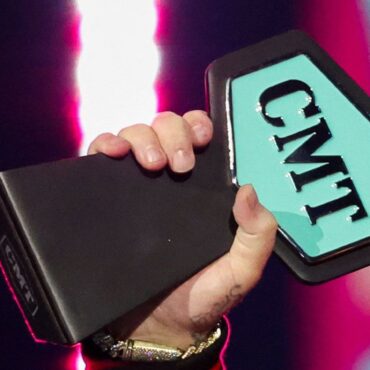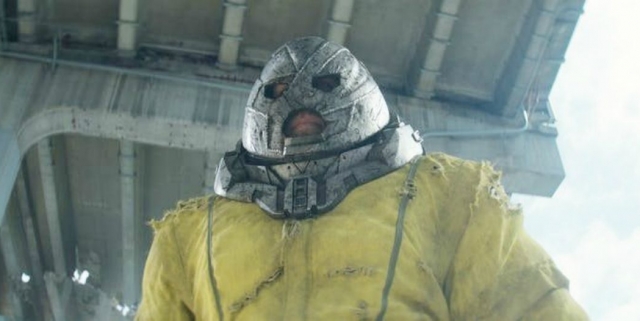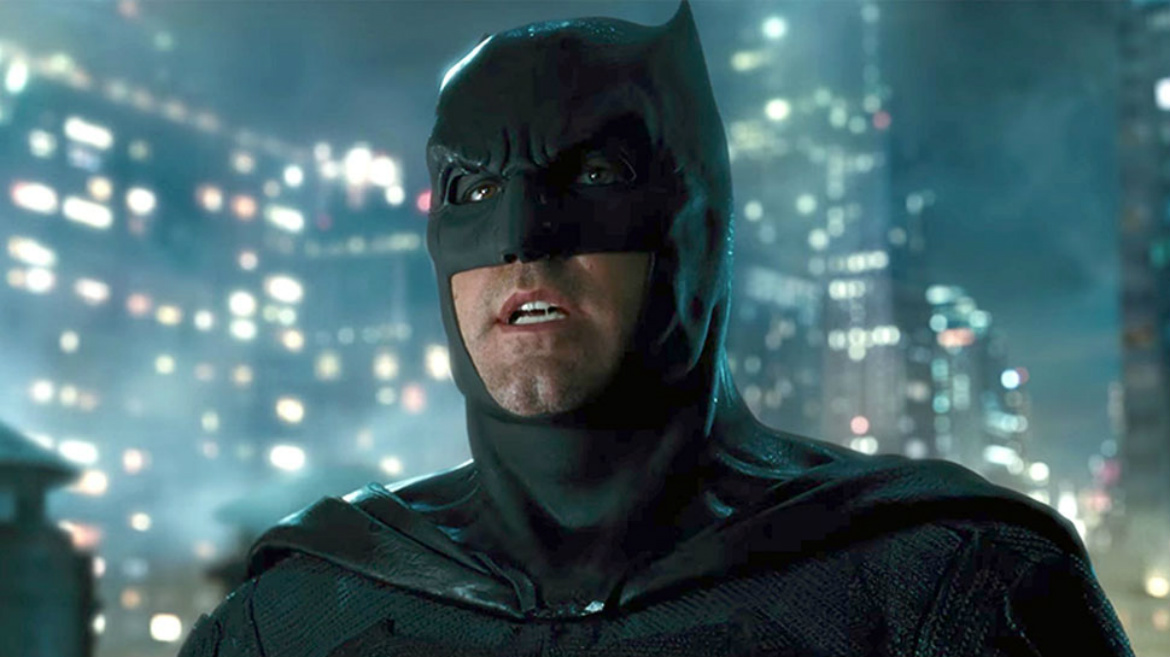chevron_left
-
play_arrow
NGradio So good... like you
share
close
When a jury decided in March of 2015 that Robin Thicke, Pharrell William and Clifford “T.I.” Harris were guilty of copyright infringement in lifting elements of their song “Blurred Lines” from the Marvin Gaye classic “Got to Give It Up,” the estate of Marvin Gaye grew several million dollars richer. But according to some industry insiders, the “Blurred Lines” verdict – which was upheld by an appeals court in March – might mean an even bigger windfall for those working in the little-known field of forensic musicology.
“Ever since this case began, people want to know what a forensic musicologist is,” says Sandy Wilbur, who has worked in the field for more than 20 years and served as an expert witness for the defense on the “Blurred Lines” case. “The last two years have been my busiest years ever.”
Some of that is no doubt due to the publicity generated by recent high-profile infringement cases like “Blurred Lines” and the battle over Led Zeppelin’s “Stairway to Heaven,” in which the group successfully fended off a copyright lawsuit with the help of a forensic musicologist. But the “Blurred Lines” verdict has also generated a great deal of uncertainty in the music industry over where the line between inspiration and imitation now lies – and, for copyright attorneys and forensic musicologists alike, that can translate to a lot of new business.
“Since the ‘Blurred Lines’ case, there has been an increase in calls to lawyers from clients along the lines of, ‘This sounds a little like this [other song]. What do you think?'” says Kenneth Freundlich, an entertainment lawyer based in Los Angeles who has represented the likes of Danger Mouse and Public Enemy’s Chuck D in copyright cases. “This has certainly increased the workload for working musicologists.”
On its surface, forensic musicology isn’t that sexy. “It specifically relates to comparing two [pieces of music] – first of all, to figure out their objective similarity, and secondly to attempt to infer the likelihood of copying,” explains Joe Bennett, a British forensic musicologist based at Boston’s Berklee College of Music.
When a music copyright lawsuit is filed, both parties will usually call in a forensic musicologist to provide detailed analysis of the two songs in question, examining everything from lyrics, melodies and rhythm to arrangement of instruments, chord progressions and harmonic elements. If an uncleared sample is suspected, an expert may even perform spectrogram analysis, looking at each song’s waveform for “digital fingerprints” that could reveal a sample’s presence.
“It’s fairly scientific and takes many years of music theory training,” says Judith Finell, who has run a musicology consulting business since the 1980s and served as a forensic musicologist for the Gaye family on the “Blurred Lines” case. “It helps if you have certain musical abilities to perceive similarities or differences [between songs].”
Given the scientific rigor with which forensic musicologists approach their work, you would think that most cases of alleged copyright infringement would be clear-cut – and in fact, they usually are. Most cases are either settled out of court because the infringement is fairly obvious (as in the dispute over similarities between Sam Smith’s “Stay With Me” and Tom Petty’s “I Won’t Back Down”) or thrown out by a judge during a pre-trial phase called summary judgment because the plaintiffs don’t have a strong enough case.
But some cases do go to trial – and when that happens, the testimony of a savvy forensic musicologist can influence a jury in unpredictable ways. That’s what happened in the “Blurred Lines” case, according to many industry experts, who say that the jury chose to award damages based on secondary similarities between the two tracks – their “look and feel and cowbells,” as one legal observer puts it – rather than their lyrics, melody and other elements more commonly considered protectable under copyright law.
“There were not two consecutive melody notes that were the same [as ‘Got to Give It Up’] in any of part of the song,” says Wilbur, who testified for the “Blurred Lines” defense team. “The appeals court ruling was two to one, with a strong dissent by one of the three judges that agreed with our position completely. She believes, as I do, that this ruling elevates ‘groove’ and ‘feel’ to the level of copyright infringement.”
Richard Busch, who represented two of Gaye’s children in the “Blurred Lines” case, calls such contentions “preposterous.” According to Busch, the verdict and the 9th Circuit Court of Appeals decision to uphold it are consistent with prior infringement cases, including a 1994 suit – upheld by the 9th Circuit in 2000 – in which the Isley Brothers successfully sued Michael Bolton for copying their song “Love Is a Wonderful Thing.”
“When that case came down, the same hue and cry came from the defense side, which was that this is going to open the door to all types of copyright infringement cases going forward,” says Busch. “It didn’t happen.”
In his written majority opinion upholding the verdict, 9th Circuit Judge Milan D. Smith Jr. echoed Busch’s argument: “Our decision does not grant license to copyright a musical style or ‘groove.'” But musicologist Bennett says that, among his students and industry colleagues, there is widespread concern that it does just that. “‘I really admire that artist, so I want to do something with a similar feel and style,'” he says, paraphrasing a common sentiment, “‘but am I going to get sued?'”
“The tune is perfectly named for the problem it’s caused,” says Niall Fordyce, an L.A.-based music copyright attorney and working musician with a background in musicology. Instead of a well-established baseline for what constitutes copyright infringement – a “bright line,” in legal parlance – the line is now, well, blurry. “It raises very important questions about what’s protectable,” says Fordyce. “From an academic standpoint, it’s fascinating. From a practitioner’s standpoint, it’s brutal.”
Because of that uncertainty, artists and their labels have become more cautious than ever about vetting their material for possible copyright risk before it’s released. “This has actually been a new development since ‘Blurred Lines,'” says Wilbur, “where a major recording group has come to me when they couldn’t clear a sample, and said, ‘I want to be sure we don’t get too close to that sample,’ before they released their single. They’re very wary now.”
Harvey Mason Jr., a veteran songwriter and producer who’s worked with everyone from Michael Jackson to Britney Spears, and also co-produced the soundtracks to Dreamgirls and the Pitch Perfect films, confirms this. “I’ve had a couple of occasions where, just to be on the safe side, we’ve gone back and changed something because it ‘felt’ like something else,” he says.
Before “Blurred Lines,” this kind of pre-release “risk assessment” was not unheard of, but the musicologists for the labels and film studios Mason works with are “much more nervous and much more watchful” now, he reports. “Before the musicologists would analyze the music and they would see if there were any really actionable objections or problems with the song that would get them in legal trouble,” he says. “Whereas now it’s a lot more ambiguous: ‘There’s no chords that are the same, but it feels like this [other track] so we better change it.'”
“The record companies are extraordinarily strident now about what you have to clear,” says Howard King, an L.A.-based attorney who served as trial counsel for the defense on the “Blurred Lines” case. Clearing samples in advance has long been standard industry practice, but King says he’s lately seen an increase in “pre-clearing” interpolations, in which an element of an old song is replicated, sometimes loosely, with original instrumentation. (Think of Taylor Swift’s “Look What You Made Me Do,” which interpolates Right Said Fred’s “I’m Too Sexy” – and gives that song’s authors writing credits on the new track, a common move when negotiating use of a sample or interpolation.) King mentions one client who was asked to clear interpolations of three different catalog songs before he could release his next single. “That was the paranoia,” he explains. “If it sounds close, we can no longer rely on the fact that the notes are different, because we don’t have a bright line anymore.”
Source: rollingstone.com
Written by: New Generation Radio
Rate it
ΔΗΜΟΦΙΛΗ ΑΡΘΡΑ
COPYRIGHT 2020. NGRADIO





















Post comments (0)